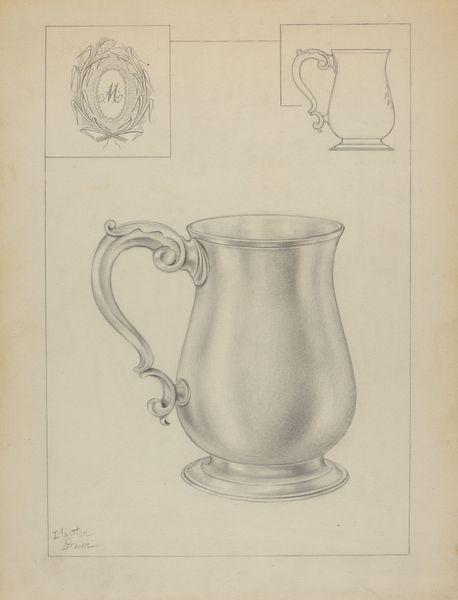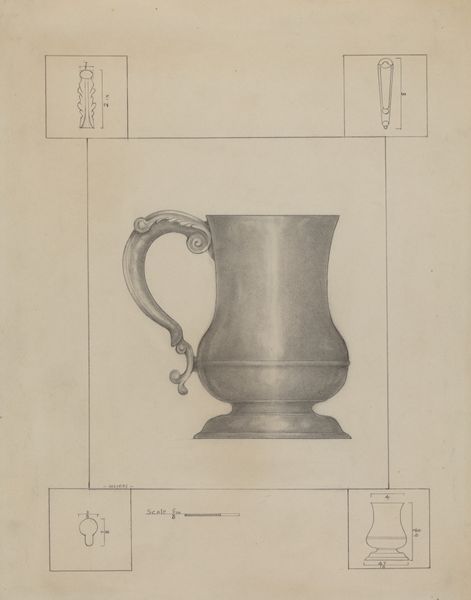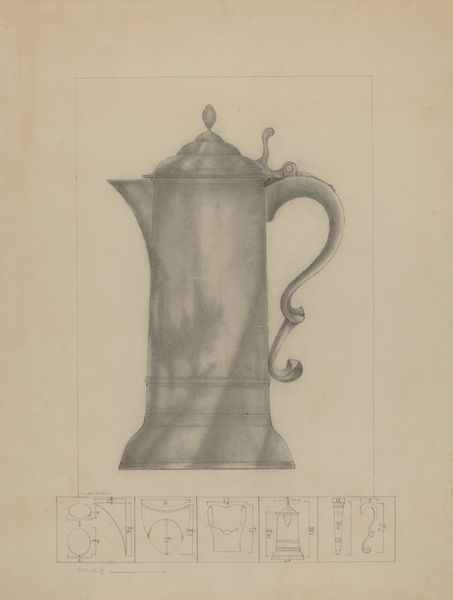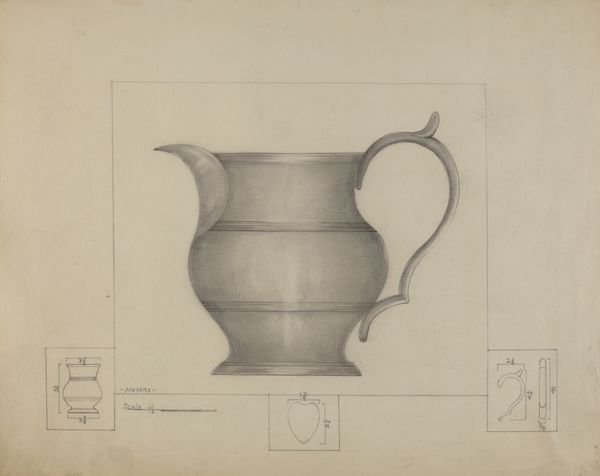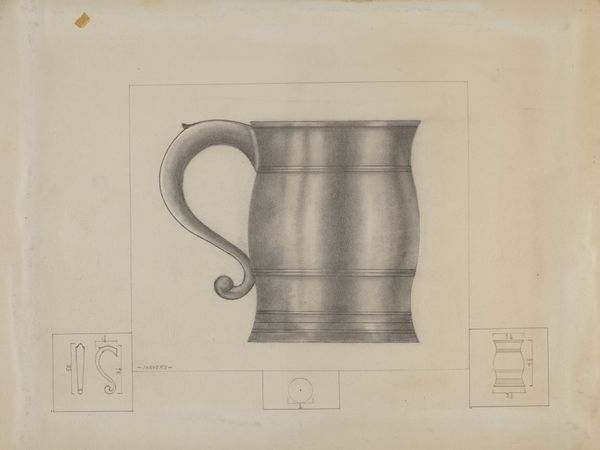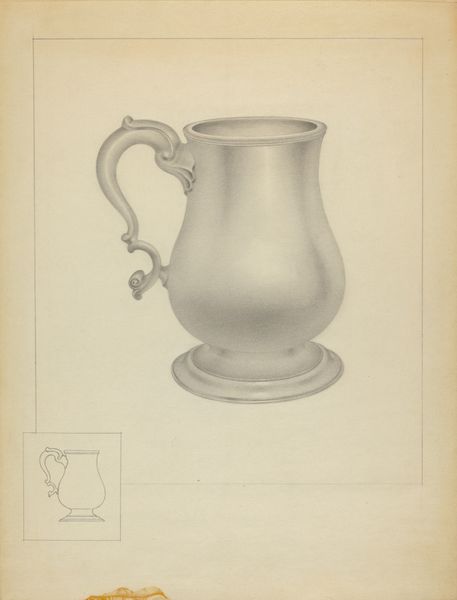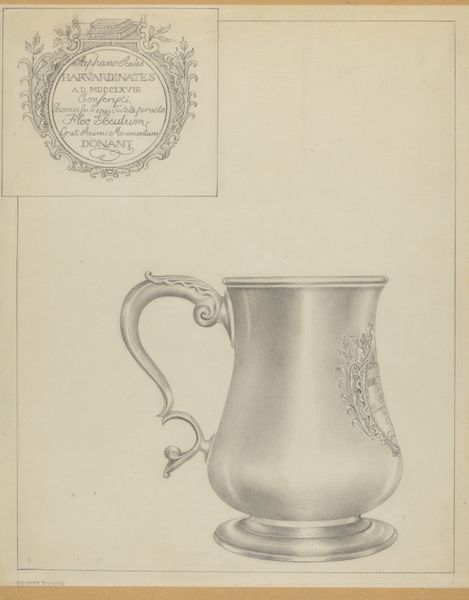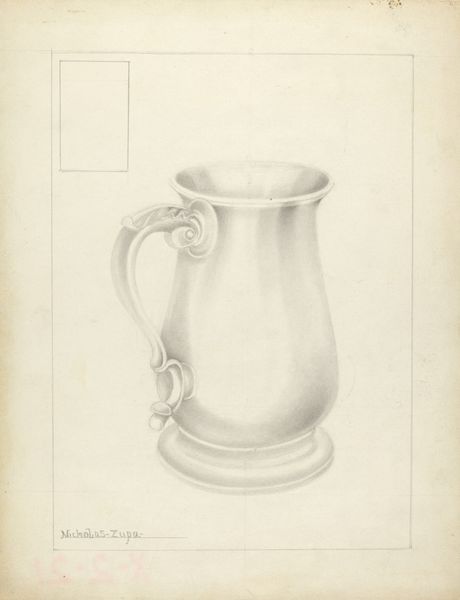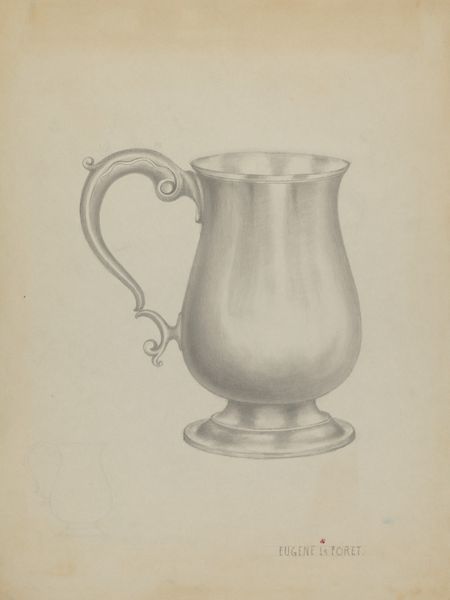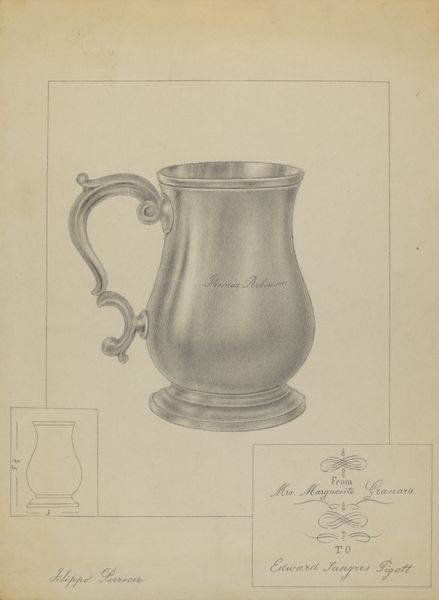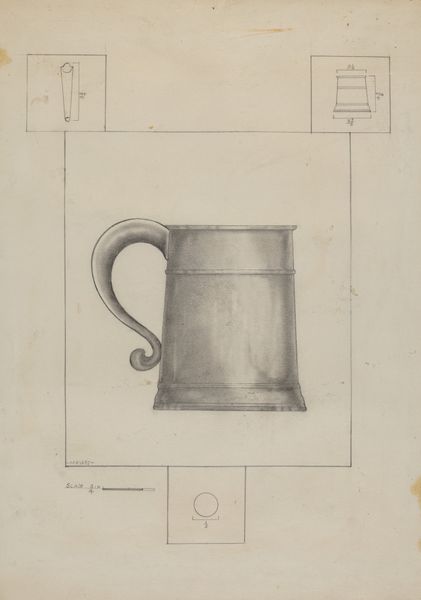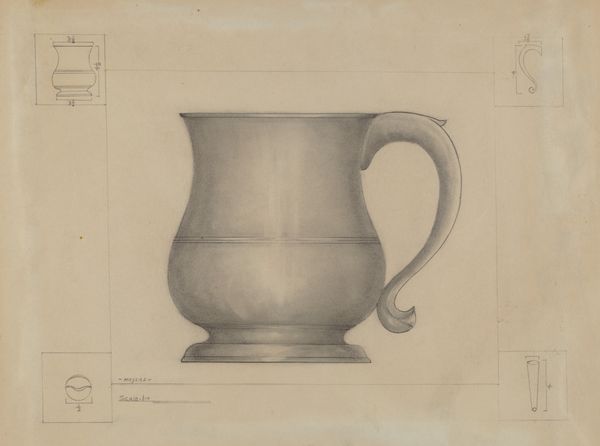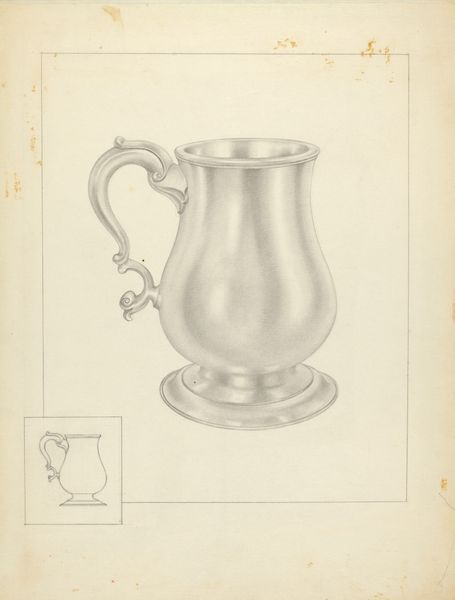
drawing, paper, graphite
#
drawing
#
paper
#
geometric
#
graphite
#
modernism
Dimensions: overall: 29.8 x 23 cm (11 3/4 x 9 1/16 in.) Original IAD Object: 5" high; 3" wide
Copyright: National Gallery of Art: CC0 1.0
Curator: Here we have "Silver Mug," a graphite drawing on paper dating to around 1936 by Hans Westendorff. It's a fairly straightforward depiction, what are your immediate thoughts? Editor: Well, immediately the subtle gradations of graphite give it a shimmering quality; the rendering creates almost palpable form. There's a pleasing sense of volume. Curator: It is elegant. It strikes me as interesting that this seemingly simple drawing of a silver mug would emerge during a period marked by economic hardship. We must ask ourselves, who might have owned such a mug, and what did its ownership signify within the context of its time? Was this everyday silverware, or was it a precious object? Editor: Perhaps it’s the stark simplicity, but for me, it's not about grand narratives of wealth. Look at the small decorative flourishes—a study in the possibilities of its form. It suggests an exploration of light, texture and tone. Curator: But surely the inherent value of silver plays into it? This period was a deeply transformative time in socio-economic landscapes worldwide, marked by immense shifts in the stratification of societies. Silver, often linked to privilege and social standing, gains different meanings in such a shifting world. Editor: I concede to the symbolic aspect, but I still cannot help to focus on Westendorff's approach to depicting this rather quotidian item. There is that almost obsessive dedication to represent every curve, line and surface... Curator: And how might the meticulous detailing, particularly the almost heraldic emblem on the side, reflect or perhaps subtly critique the power structures of the time? Does its ornate quality speak to the decadence that fueled socio-economic inequalities? Editor: I see what you are hinting at. Though to my eyes the careful delineation suggests something almost like... worship. Not to nobility perhaps, but the properties of reflective surfaces! Curator: A beautiful rendering, to be sure, but these objects can reveal broader truths if we consider the narratives woven within and around them. Editor: Agreed, but a reminder that, within the social context, form is an active agent too, directing our very ways of seeing.
Comments
No comments
Be the first to comment and join the conversation on the ultimate creative platform.
